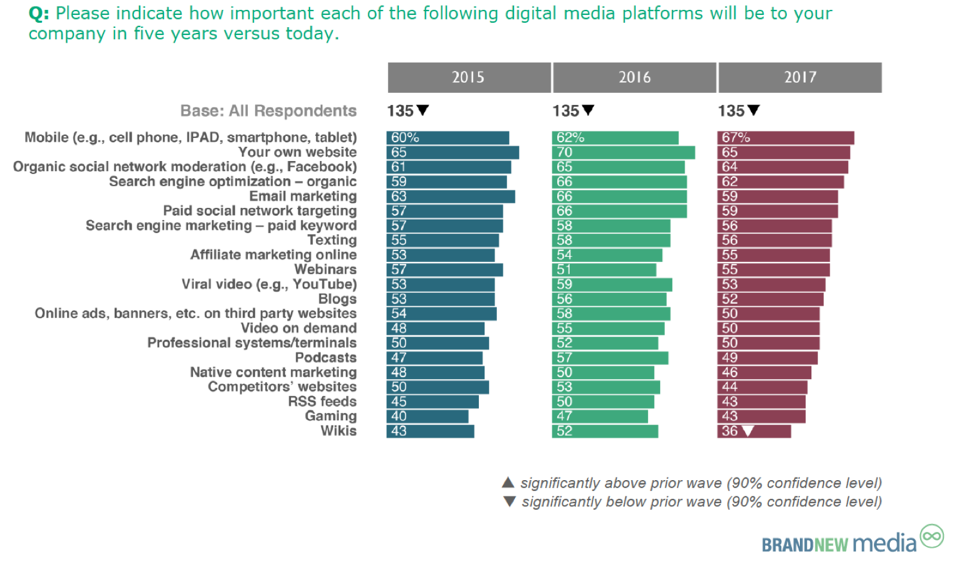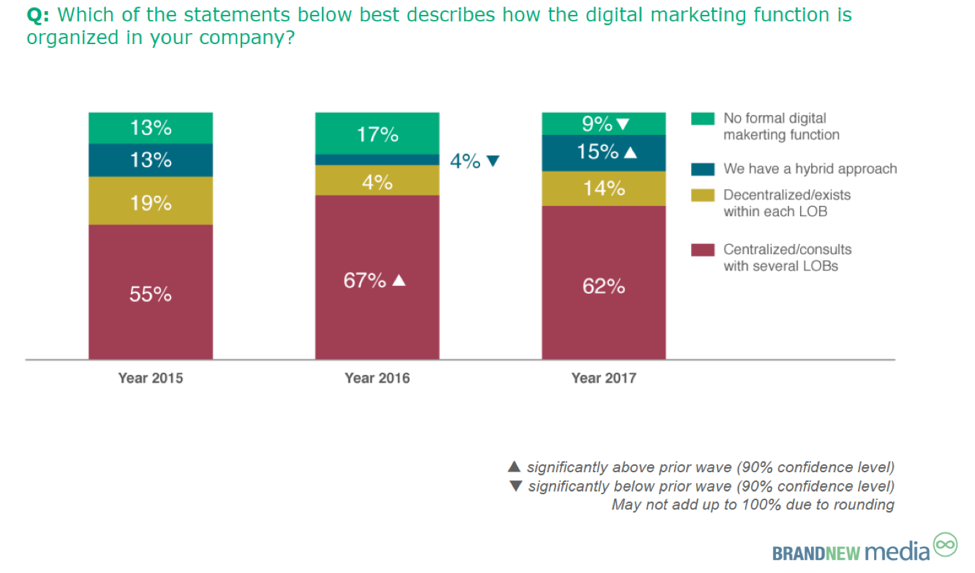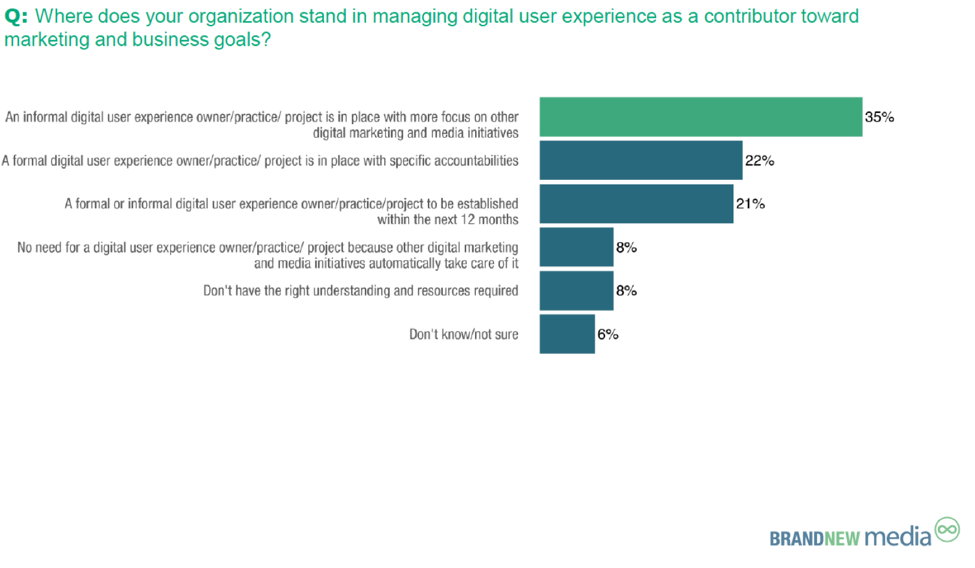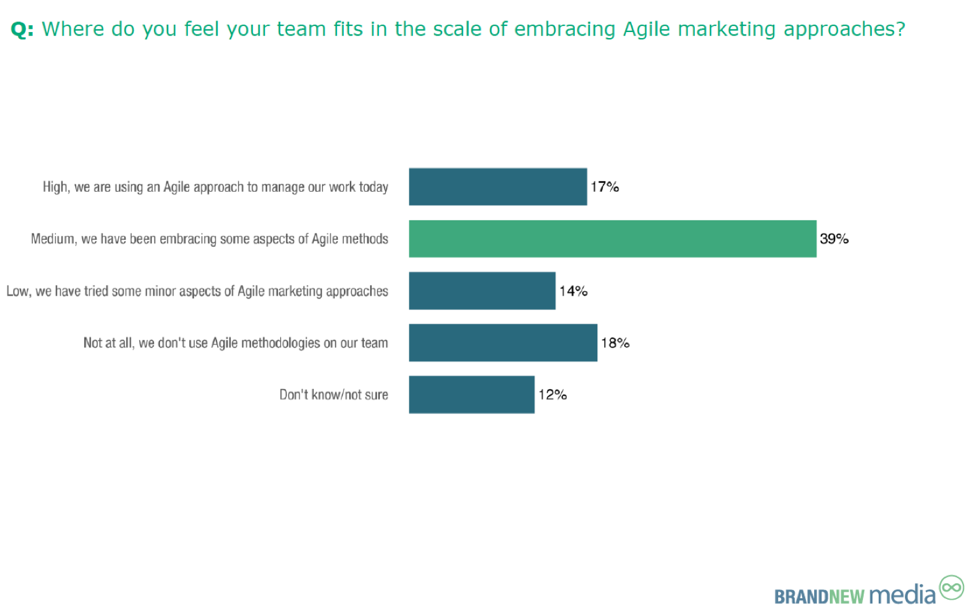lmost every financial services company is undergoing some form of digital transformation as they prepare to meet and service their customers in an ever-evolving landscape.
That was a key finding of Brand New Media’s “Digital Marketing of Financial Services 2017” report, which identified the organisational structures, budgets, processes, and metrics that financial companies are using.
Following are the biggest trends identified in the comprehensive study.
01 / Mobile is the most important channel for financial marketers
When asked which digital platforms would reign supreme at their organisations in five years, respondents singled out mobile, just ahead of websites, social media, and search.

“Seeing as though mobile and website are the top priorities, the mobile-optimised website becomes something that financial marketers need to nail,” said Frank Dudley, president and CEO of Brand New Media (BNM) and a professor at Northwestern University. “We’ve seen a shift from apps, as they are more utilitarian and focused around a discrete set of activities. People really want to go to a firm’s site on their mobile device for a wider range of things.”
BNM anticipates an increase in texting and metrics around texting over the next few years. The same goes for messaging services, which, Dudley predicts, will become the preferred communication channels for Millennials, over e-mail.
“Financial marketers need to start adopting a mobile-first mentality in terms of their marketing efforts because let’s face it, there’s a lot of work to be done there,” Dudley told.
02 / Digital has evolved into a distinct, centralised function
According to the BNM study, the majority of financial marketers (62%) said their firms have centralised their digital marketing function. For the remainder, the function is near-equally distributed among alternative approaches.

“We’re seeing a bifurcation or separation, to some extent, in some companies of digital as a separate centralised function from what we might call corporate marketing communications,” Dudley explained. “So a company may have a chief communications officer or SVP of corporate communications, which might include social, but most of the other digital marketing-related initiatives might now be under a chief digital officer or customer experience officer, where the lead generation, retention, and customer service efforts are more fully operationalised via digital channels. The real focus on this newly transformed digital organisation will be to personalise and optimise the customer journey.”
03 / Investment in marketing technology will continue
Around two-thirds (65%) of the financial marketers surveyed said senior marketing executives in their firms regard investments in advertising and marketing technology platforms and resources as having generated great returns.

“There are a few key areas that our research was able to identify where financial marketers are primarily making investments, and they are in sales automation, CRM, social marketing and publishing platforms, DMPs, and programmatic advertising and marketing,” Dudley said.
04 / User experience (UX) will become a more formalised function
The majority of survey respondents (35%) described their management of the digital user experience as informal, with a greater emphasis on other digital marketing and media initiatives.

And of 11 specific components around the digital user experience, most financial marketers said their firms were most competent in delivering “sign-on/password privacy and security,” followed closely by “page loading speed on desktop” and “visual consistency.”

Of course, the plethora of tactical components of user experience must be seen as part of an integrated whole, Dudley said. “That is why there is minimal difference among them,” he said. “It’s when you get to the more strategic and personalised UX initiatives where you start to see a significant drop in UX capability.” According to Dudley, this is where firms can quickly carve out a leadership position and capture new customers.
Just over 35% of firms said their UX strategy is more project-oriented than a discipline, with primary management responsibilities falling to internal product/business teams/leads (28%) or an internal user experience team or lead (26%).
“We have clients that basically had ‘digital marketing’ as their primary title. That title is increasingly being combined with responsibility for customer experience, as ‘digital’ and ‘customer experience’ become more inextricably linked to managing the customer journey,” Dudley said. “So you’re starting to see a combined digital and customer experience role, which makes perfect sense as we move toward a more personalised interaction over a customer’s journey with the brand. But there still needs to be more formalisation of the discipline, team, and capability internally. We expect that to happen over the next year.”
05 / Expect growth in agile marketing, with a strategy that focuses on content, data, and UX
Around 70% of firms have embraced agile to some extent, with support most commonly rated by financial marketers as “medium” (39%).

“In agile, we saw three areas where CMOs and their direct reports are insourcing versus outsourcing capability over this past year: digital content, data, and user experience,” Dudley said. “They also are the three areas that you must have in order to execute a digital campaign. The primary barrier to agile is everyone totally getting it.”
Most financial firms are employing the Kanban agile-process methodology, Dudley said. “Agile has been used on the technology side of business by engineers for years, but with the integration of engineering and marketing, agile marketing has emerged as a discipline and approach to marketing that’s going to grow over the ensuing years,” he said.
Source – CMO by Adobe
Take your financial organisation’s growth to the next level –
Contact Us

